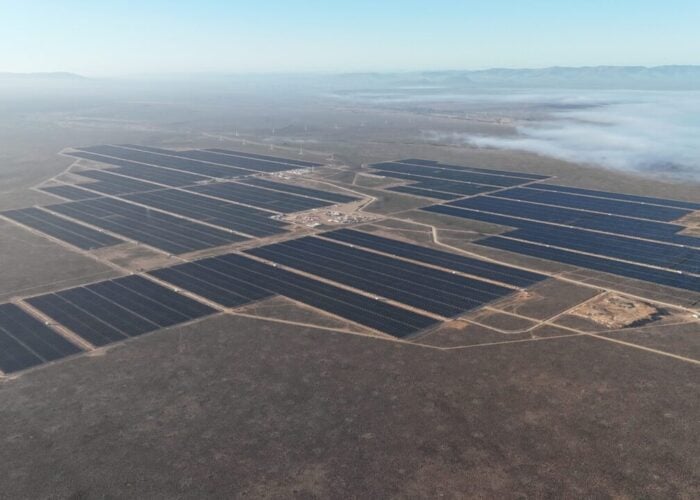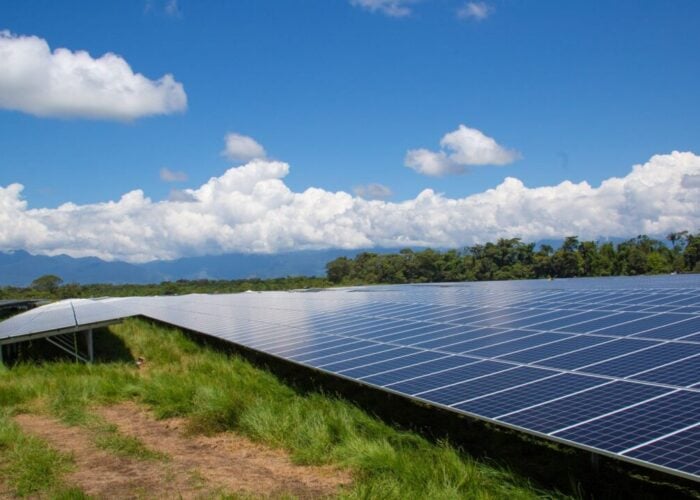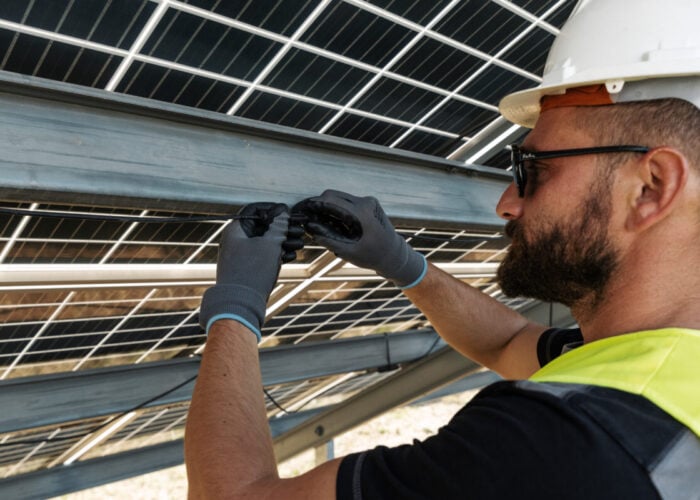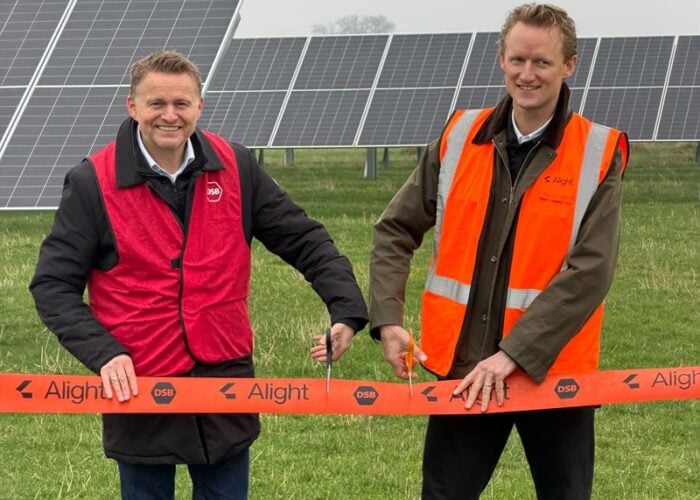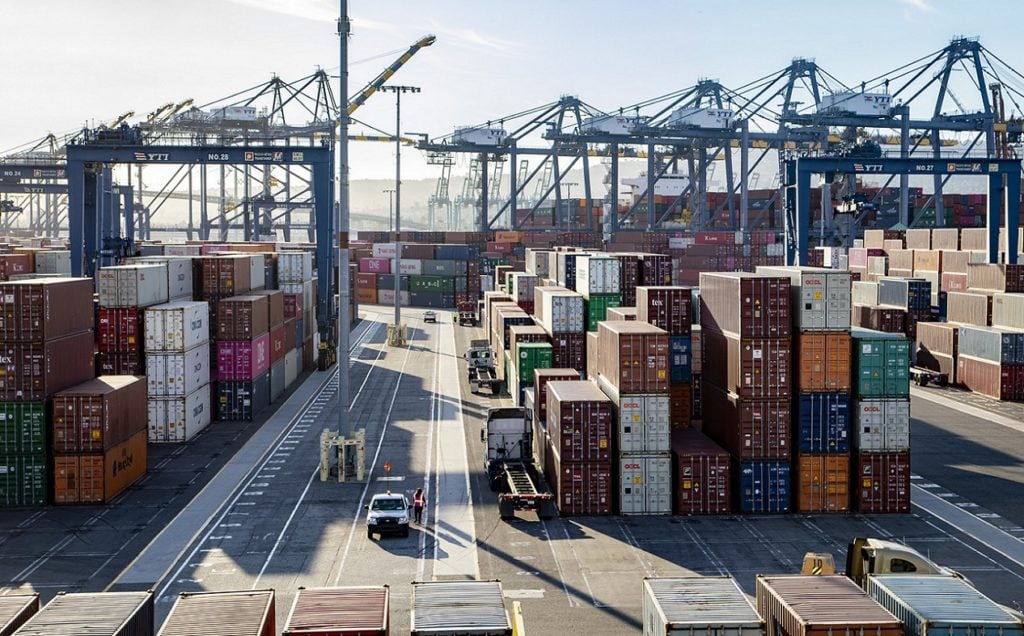
The combined effects of the ongoing anti-dumping and countervailing duty (AD/CVD) tariff investigation and the Uyghur Forced Labor Prevention Act (UFLPA) curbed US solar deployments in 2022, according to a joint report from the Solar Energy Industries Association (SEIA) and Wood Mackenzie.
The US installed 20.2GW of solar last year across all market segments, a 16% decrease from 2021.
Try Premium for just $1
- Full premium access for the first month at only $1
- Converts to an annual rate after 30 days unless cancelled
- Cancel anytime during the trial period
Premium Benefits
- Expert industry analysis and interviews
- Digital access to PV Tech Power journal
- Exclusive event discounts
Or get the full Premium subscription right away
Or continue reading this article for free
The UFLPA, which came into force in June, imposed a ban on product imports assumed to have been made under alleged forced labour conditions in Xinjiang province, China. This has led to equipment detainments at US borders and a shortage of PV supply.
Simultaneously, the ongoing saga of the Department of Commerce’s AD/CVD investigation – which in December found over 20 Chinese companies guilty of circumventing import tariffs via Southeast Asia – has created uncertainty in the US market despite president Biden’s two-year waiver of the tariffs, the report said.
Utility-scale deployments were hit the hardest, falling 31% year-on-year to 11.8GWdc – the lowest installation since 2019. Commercial and community solar deployments were also down, 6% and 16% respectively.
The only segment to buck the trend was residential solar, which grew 40% year-on-year and installed around 6GW in 2022. The report said that some 700,000 homeowners installed solar in 2022 – 6% of all homes – of which 738MW was installed with battery storage.
Still, solar PV was the top technology for energy capacity additions in the US for the fourth consecutive year, accounting for 50% of all additions.
“Companies are aggressively shifting their supply chains, helping to ensure that solar installed in the US is ethically sourced and has no connection to forced labour,” said SEIA president and CEO Abigail Ross Hopper. “While the solar and storage industry acts swiftly on supply chains and building a stronger domestic manufacturing base, ongoing threats of steep tariffs are holding back the potential of the historic Inflation Reduction Act (IRA).”
The US Solar Market Insight 2022 Year in Review report also included forecasts for the coming year and the rest of the decade to follow. The primary trajectory is one of growth brought about by the IRA; the US solar fleet is expected to grow fivefold to over 700GW by the end of 2033, primarily as a result of IRA measures and the stability and certainty provided to the market.
More domestic module supply is also set to come online over the coming years, which will go some way to offsetting the potential for AD/CVD tariffs coming into force after Biden’s two-year waiver expires in 2024. WoodMac said that, by the end of 2023, US domestic module capacity could reach 25GW if all the currently announced plans and projects materialise.
The ongoing clarifications and navigation of the tax credits and adders included in the IRA will also play a role in the industry’s fate for the next 10 years, and could contribute to some 40GW of disparity between the best- and worst-case scenarios that the report outlined.
Specifically, WoodMac forecast that a base level of 429GW of utility-scale PV will be added in the next decade, with a variation in possible outlook that depends on labour availability, interconnection reform and tax equities.
The residential sector is set to quadruple in size, adding over 90GW by 2033. The commercial sector is set to see an average of 10% annual growth, whilst community solar is set to more than double by 2027.
Looking directly to 2023, the report said that supply chain constraints are set to ease as more modules find their way through customs barriers and growth resumes.
“While 2022 was a tough year for the solar industry, we do expect some of the supply chain issues to ease, propelling 2023 growth to 41%,” said Michelle Davis, principal analyst at Wood Mackenzie.
A report last year from WoodMac already predicted that the IRA’s true benefits won’t be felt until 2024, hampered as it has been in its early stages by logistical processes and supply chain clogs. Similarly, domestic manufacturing capacity is set to grow massively, but not without a significant time lag which will require bolstering from imports to meet demand.
The report called 2022 “one of the most volatile policy years in industry history”. Whilst the US industry won’t be quite out of the woods, 2023 is set to be a partial return to form with the second half of the year in particular seeing acceleration in shipments and deployments.

